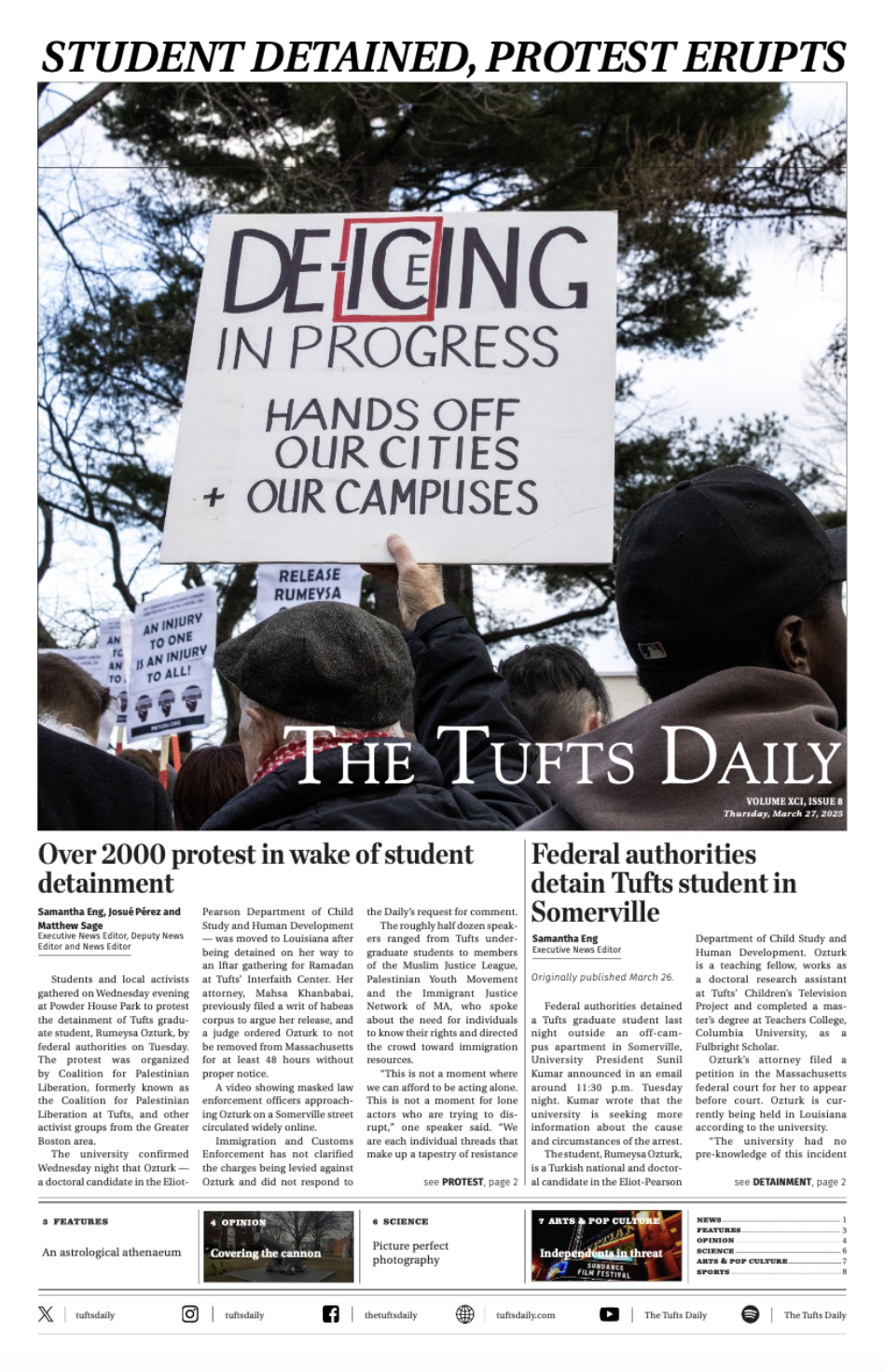The Board of Trustees of the Omidyar-Tufts Microfinance Fund has taken the initial steps to outline an investment plan for the $100 million gift from Pierre and Pam Omiydar (LA '88 and '89, respectively) with diversification as the primary goal.
The Board intends to invest in both direct and indirect microfinance "to better position the fund to take advantage of a wider range of investment opportunities," according to an e-mail response from Tufts' investment office.
"We will seek to diversify the fund's investments across a number of dimensions, including geography, currency and investment-fund managers," the office said.
Yet the investment is conspicuously different from the investments in which Tufts typically puts its donations: instead of tapping the returns from stocks or bonds, Tufts sets out to invest in microfinance at an unprecedented level to tap, as the Economist put it, "the hidden wealth of the poor."
Microfinance refers to small investments, particularly in the developing world, through which very small loans, as low as U.S. $50 or $100, can make a big difference in the lives of very poor people who would not qualify for traditional financial services.
The plan would not only generate revenue for Tufts, but also supply much-needed capital for the developing world.
"Half of the returns on the Omidyar-Tufts Microfinance Fund's investments are reinvested in the fund, and half [are] used for programs at Tufts," read a statement from the Tufts investment office.
Despite their lack of resources, the poor have by and large proved to be scrupulous customers, and their default rates are extraordinarily low, averaging between one and three percent.
An increasing number of investors are considering microfinance not only as philanthropy, but also as good business, an entrepreneurial spirit that the Omidyars want to harness.
Since the initial donation, the fund has been invested in a traditional and stable money market account, earning returns to finance undergraduate summer internship stipends and summer school tuition. As appropriate investment opportunities are identified, the funds will be invested in microfinance.
Microfinance investments themselves are still being made. In April, the Fund Board approved two such investments. One is an investment in a microfinance company and the other is an indirect investment in a microfinance fund that makes loans in Latin America.
University spokeswoman Kimberly Thurler declined to provide more specific information on these investments due to investment office policy.
"Neither investment has yet been made because final terms are still being worked out," she said, adding that she hopes to see the process completed by the fall.
But what exactly goes into investing such a fund?
For all of microfinance's promise, finding reasonable and sustainable microfinance opportunities is no easy task and is an undertaking that, according to Thurler, will likely take as much as three years to complete.
Gil Crawford, who is the general manager of MicroVest Capital Management, is not working for the University but is an expert in the field of microfinance.
"You need time to study the space and do it correctly," he said of such investments. MicroVest is an intermediary firm that helps companies invest in particular microfinance opportunities.
While some microfinance opportunities are very reliable, others are far riskier. Of the 8,000 microfinance banks worldwide, Crawford said that his company would only consider investing in approximately 250 of them.
A direct investment goes directly into a microfinance company that will give small loans to small developing businesses in the region.
"We are taking a part ownership interest in this company," Thurler said of the direct type of investment, comparing it to a citizen buying shares of stock in a publicly traded company.
In indrect investment, intermediaries like MicroVest operate as the middleman by receiving investments and distributing them among microfinance banks abroad.
While direct investments are judged primarily on predicted risk/return ratios, indirect investments are judged on the investment manager's ability to select good opportunities, according to the statement from Tufts' investment office.
"We [the investment office] look at six areas," the statement read. "The strength of the organization, the quality of the people, the coherence of the investment philosophy and process, the prior performance achieved by the manager and the terms we are able to negotiate, as well as the fit of the product being offered within the portfolio structure we have developed."
Crawford is convinced that the Omidyars' donation will lend serious credibility to the practice of microfinance investment.
He thinks that Tufts is poised to lead the way in showing other universities that microfinance "is a safe investment for other endowments."
According to Crawford, microfinance companies are still trying to demonstrate the benefit from microfinance investment.
If investors put all their eggs in one basket by placing large amounts of money into a single corporation in developing countries, any shocks to the economy can result in serious losses.
Because microfinance loans are diversified among thousands of smaller companies and self-employed individuals, investments in these areas can prove hardier in times of economic hardship.
"I think they're really doing some extraordinary stuff," Crawford said.





